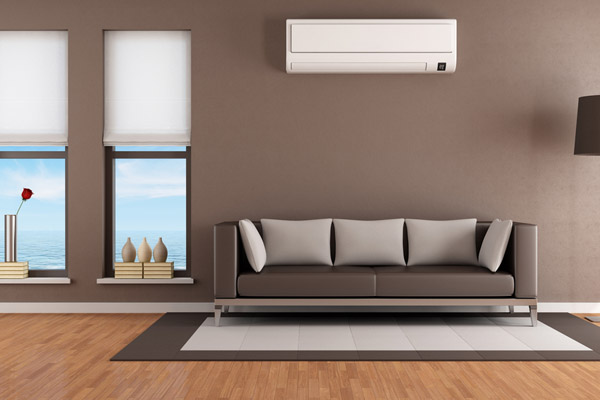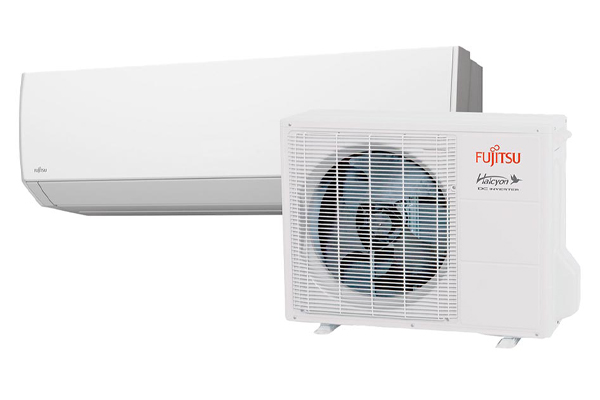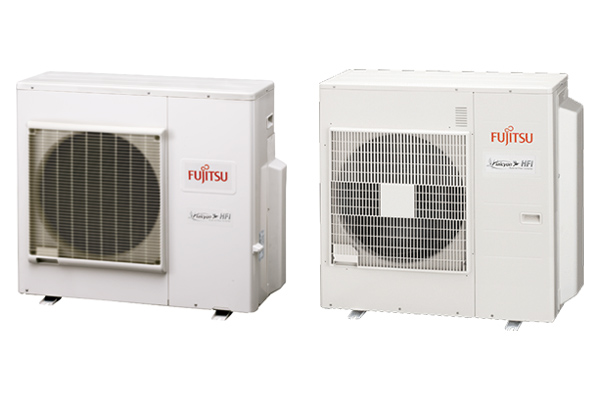Best Ways To Create A Zoned Mini-Split System

A mini-split system lets you control the temperatures of individual zones or rooms. It has two primary components: an indoor air-handling unit and an outdoor compressor/condenser. These two components are linked via a conduit that runs through a three-inch wall hole.
Mini-split systems are an excellent solution for new constructions or whole homes. They are also perfect for add-on areas where adding ductwork is not a practical option. Furthermore, they can supplement your existing central HVAC system by using it less to help reduce your home heating and cooling costs. Mini-split systems offer efficiency, safety, cost-effectiveness, and flexibility. As such, there is a rising demand for zoned mini-split systems.
How To Create A Multi-Zone Setup Using A Ductless HVAC System
Contents
- 1 How To Create A Multi-Zone Setup Using A Ductless HVAC System
This type of system has a lot to offer. It might be overwhelming but do not fret. This three-step guide will help you determine the best way to create a zoned mini-split system in your home.
Step One: Find Out The Ductless Size Or Capacity Needed
The first and most vital thing that you
have to do when buying any kind of HVAC system is to find out the mini-split size or capacity that your home requires. The size or capacity is the unit’s ability to remove heat. It is measured in British Thermal Units or BTUs, which is the amount of heat needed to raise the temperature of one pound of water by one degree Fahrenheit.
Mini-Split Sizing
Getting the right-sized mini-split system is essential to ensure that it can generate the desired temperature efficiently. Keep in mind that the more tons or BTUs a mini-split has, the more heating and cooling it can provide. For instance, a mini-split that has 6,000 BTUs can typically heat around 150 to 250 square feet of space. Whereas, a unit that has 24,000 BTUs can heat or cool 1,400 to 1,500 square feet. Therefore, a larger mini-split can condition larger areas as well.
If your ductless system is improperly sized, then you are bound to encounter problems immediately. A ductless mini-split that is too small will end up wasting energy. It will continuously run, and it will not be able to keep you comfortable. You’ll notice warm spots even though you’re using the air conditioner and vice versa.
On the other hand, a system that is too large tends to short cycle. This is when a system turns on and off frequently. An oversized mini-split will end up costing you more and might fail prematurely.
It is highly recommended and required that you size your ductless mini-split correctly. An improperly sized unit only leads to lower efficiency, decreased home comfort, increased service costs, and premature failure. To ensure that you get the right size, contact your local trusted HVAC technician.
Nominal Versus Actual
An HVAC condenser undergoes a performance test so that the manufacturer can determine the size of the condenser. This test is done under ideal conditions. The result is called the nominal capacity rating. It is what gives consumers an idea about the capabilities and size of one condenser to another.
However, a testing facility is very different from the real world. This is what actual capacity rating is for. How a mini-split will perform and operate depends on various factors, including the outdoor temperature, installation variations, humidity, and line-set length, to name a few. All of these will factor in on the actual experience.
Some mini-split units work and operate harder when there is extreme heat but then work fine the rest of the time. If the space you want to cool is in between sizes, choose a size higher so that it can keep up with when needed.
Step Two: Select A Ductless Condenser
When you know the proper ductless condenser size needed for your home, the next step is to find out which condenser type will work best. If you are looking to create multi-zones, then the condenser type falls into two categories. These are branch box and multi-port.
Branch Boxes
A branch box is a sophisticated system that links the indoor air handler to the condenser. It is usually used for higher capacity multi-zone outdoor units, specifically, those that use the eight-zone capable condensers. With the use of a branch box, there is one single connection from the outdoor condenser to all of the indoor air handlers. A branch box enables the perfect amount of refrigerant. When two branch boxes are connected, some mini-splits setups can handle up to nine zones on a single condenser.
Keep in mind that branch boxes are manufacturer-specific. Therefore, a condenser only supports certain branch-box combination. If you are choosing to have a branch box, make sure to ask a professional about it so that you choose the right one.
Multi-Port
A multi-port is an all-in-one condenser that comes equipped with built-in refrigerant ports. These ports allow multiple connections from the outdoor unit to the indoor air handlers. It is also easy to use as it is a plug and play. This means that you can have multiple, independently-controlled zones without the need to braze additional pipe connections.
This type of condenser is less expensive than a branch box. However, some of its cons include limited capacity, reduced flexibility, and few available line set lengths. There is also the issue of having several line sets running outside of your home. This can be unappealing, especially if you value aesthetics.
Branch Boxes Vs. Multi-Port
Both types of condensers have advantages and disadvantages. For instance, multi-port condensers are easier to install. It requires fewer parts and is less laborious. It also only lets you have four to five zones in your home. Multi-ports have limited BTU capacity and would also need longer line set runs.
On the other hand, a branch box has higher BTU capacity and increased flexibility. It also allows you to have a maximum of nine zones in your home. However, this type of condenser has a more complex system. This means that its intricate installation requires more labor and parts.
If you are unsure which one to choose, then it is recommended that you check out the differences between these two condensers. This way, you’ll know which one will function best according to your needs.
Step Three: Choose A Ductless Indoor Air Handler
The final step to creating a multi-zone ductless system is picking out the type of indoor unit for your home. Multiple types can serve your home’s specific needs. We have listed a few below:
Wall-Mounted
A wall-mounted ductless unit is the most common type of indoor air handling unit. This is because a wall-mounted system is the easiest to install, least expensive, and is often the most efficient type available. Due to its popularity, there are many available sizes, kinds, and efficiency ratings on the market.
It is installed on a vertical wall. During its installation, an HVAC contractor will drill a three-inch hole through the wall to run the drain tube, connecting wire, and refrigerant lines. They will ensure that the room has wide walls and no high windows. Otherwise, the room might require a different type of indoor air handler.
Floor-Mounted
A floor-mounted is an indoor air handler that an HVAC contractor mounts at the bottom of the wall, near the floor. They install it at least six inches above the floor level. It is perfect for homes that do not have the wall space, or when windows are too high. It is also an excellent solution for rooms that have low or slanted ceilings like a finished attic.
Ceiling Cassette
A ceiling cassette is mounted within the ceiling. It is perfect for when you have T-bar and other types of drop ceilings. It can also be installed on drywall and joist ceilings provided that there is enough space between joists. When the installation is complete, only the grilles are visible in the room. This makes it an almost invisible cooling and heating solution that can supply conditioned air from all sides.
Concealed Duct
A concealed duct unit offers concealment and flexibility no other indoor air handling unit can provide. The unit is installed outside of the zone, and only the grilles through which the conditioned air flows can be seen. It is a combination of a traditional central forced-air system and a ductless mini-split. The concealed duct unit can be installed in the attic, a crawlspace, or a closet. It then uses the ductwork to deliver the cold or warm air where it is needed.
Because it is nearly invisible, this type of unit is perfect for when you value a room’s aesthetic. It is also a good choice for when your ceiling cannot accommodate a ceiling cassette unit. Unfortunately, this type is not as efficient as its counterparts.
Ceiling Suspended Indoor Unit
A ceiling suspended unit is installed directly to a ceiling. It can also be suspended below the ceiling level via threaded rods. The latter is for when there are appliances that are installed on your ceiling. These appliances can block the airflow of the ceiling unit, hence, the need for threaded rods. You need to make sure that the unit is at least eight feet from the floor and that it is installed against a wall and not in the middle of the ceiling.
Check Out One Of Our Ductless Installation Projects
Fujitsu Ductless Cooling System Installation In Newburyport Massachusetts
Conclusion
Once you have figured out these three steps, then you are well on your way to creating a zoned mini-split system for your home. As always, you should seek the help of a professional when determining which type of setup is best for you. A qualified HVAC technician can assist you in finding the best ways to create a zoned mini-split system that truly satisfies your home comfort needs.
Call Townsend Energy For All OF Your Home Heating And Cooling Needs
If you are ready to switch to a ductless HVAC system or have more questions, call Townsend Energy today. Our experienced NATE-certified technicians will discuss your needs and requirements to help you find the best ductless HVAC system for you.
Townsend Energy is a full-service HVAC company that services residential and commercial properties throughout New England. We offer a range of heating and cooling services, including HVAC installations, repairs, tune-ups, and more. Our experienced, NATE certified professionals can find the best home heating and cooling solutions for your home while working with your budget. We aim to improve your home’s level of energy efficiency, comfort, and indoor air quality. Our work is backed by a warranty to ensure your satisfaction. We also provide free, in-home estimates. Call Townsend Energy today.
Contact us now at (800) 722-4101 to find out more!



